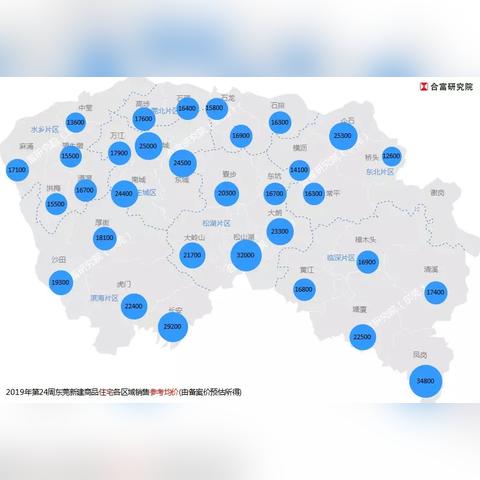Introduction
Welcome to the comprehensive guide on the balance between relaxation of purchase restrictions in the housing market and maintaining the "houses for living, not for speculation" bottom line in China. This article aims to provide a detailed overview of the current state of affairs, with an emphasis on the official perspective, as the nation surges towards the year 2025. It is critical to understand that beyond economic implications, these policy decisions also hold a significant impact on social stability and long-term sustainable development.
The Evolving Housing Market Landscape
The Chinese housing market has undergone significant changes over the past few decades. Driven by rapid urbanization and economic growth, demand for housing has soared. The national strategy for economic restructuring has focused on promoting more balanced regional development and addressing the urban-rural divide, but it becomes equally imperative to maintain affordability alongside this growth. There is a recognized need to create a housing market that serves not only investors seeking profit but, more fundamentally, the families who reside there.
Economic Policies and Housing Restrictions
Understanding the official viewpoint on tackling housing market challenges begins with recognizing the various economic policies enacted. Over the years, China has deployed a plethora of measures to curb housing bubbles and speculative investments. These限购 policies, or purchase restrictions, have aimed to limit real estate investments, especially by non-residents and multiple purchasers. The primary goal has been to ensure that housing is primarily for residential use and not merely as a commodity for speculative gains. However, with the growth of cities and the increasing need for housing among the rising middle class, there has been a countervailing argument for easing certain restrictions to cater to the legitimate demand for housing.
Balancing "Houses for Living, Not for Speculation"
The policy guideline of "houses for living, not for speculation" has been at the core of China's real estate planning. It underlines a commitment to ensuring that housing remains a stable and affordable asset for residents. Despite these controls, the housing market remains dynamic and continuously evolves. Balance is crucial in applying too strict or too lenient policies, as both can result in undesirable economic and social consequences.
The Rise and Fall of Purchase Restriction Policies
The tide of purchase policies, marked by their implementation and banning, illustrates a nuanced approach in governing the housing market. Purchase restrictions have sometimes been rolled back or eased due to local economic considerations or population control strategies. Recognizing that a one-size-fits-all policy may not be effective for the diverse strata of real estate markets across the country has led to a system where local governments can tailor policies to specific conditions. This has resulted in what is termed the "限购松绑潮," a wave of relaxing purchase restrictions, which has shown to be more a shift in local authority than a complete reversal in policy direction.
Regulatory Flexibility and Precautions
Economic theorists and policy planners alike understand that a steady hand must be kept on the throttle when easing put restrictions. Flexibility is important, but so is a vision for what a balanced housing landscape looks like. In light of this, the central policy continues to guard against unchecked housing inflation and the reemergence of speculative practices that could destabilize the markets. The cautious approach to 限购松绑, or relaxation of purchase restrictions, reflects a nationwide commitment to long-term stability and growth.
The Impact on Regional and Urban Development
Another crucial aspect of the official viewpoint is considering how these policies impact different regions in China. Urban areas, in particular, have been at the forefront of housing demand and policy experimentation. Policies such as allowing increased migration and easing housing conditions for those who move can foster urban development. However, they also necessitate a balance to prevent urban overcrowding, if not managed correctly. This strategy underscores an important facet of the policy: adaptability to regional conditions.
Simultaneous Drive for Economic Growth and Social Welfare
Perhaps one of the most overarching official viewpoints on this issue is the drive for simultaneous economic growth and social welfare. The housing market, as a sector, impacts almost every economic aspect of a city or region and directly touches the lives of every household. Thus, creating policies that would ease restrictions without losing sight of the main goal of ensuring affordable and quality housing for residents goes hand in hand with economic development strategies. This is a delicate balancing act that hinges on policymaker's skill and foresight.
The Role of Free Data and Resources
Data and resources play a critical role in understanding and shaping these policies. The availability of "2025精准免费资料大全" or a comprehensive set of high-precision free materials is instrumental. Access to accurate, up-to-date information allows researchers, policymakers, and the public to better understand the implications of policy changes and their impacts on both local and national economic conditions. This data serves as the basis for informed decisions, helping to ensure that the implementation of 限购松绑潮 is conducted with prudence and with an eye on the "houses for living, not for speculation" mandate.
Observations and Forecasts
Moving forward towards the year 2025, predictions about the Chinese housing market are fraught with both challenges and opportunities. Infrastructure investments, demographic shifts, and regional disparities all contribute to a complex picture that policy decisions must navigate. Continued monitoring and research, empowered by the free and precise resources available, are invaluable for shaping these policies. Forecast for the upcoming years is marked by the importance of complementing economic goals with social welfare provisions to maintain the delicate balance between economic development and housing affordability.
Conclusion: Embracing Change with Steady Hands
As the official perspective on housing policy evolves, it is essential to stay well-informed about all aspects of the housing market, especially as it pertains to the delicate balance between 限购松绑潮 and the need to uphold the "houses for living, not for speculation" principle. Change is inevitable, but it is managing that change with a steady hand that will ensure a fair and prosperous housing landscape in the years to come.
















 琼ICP备2023003230号-1
琼ICP备2023003230号-1
还没有评论,来说两句吧...